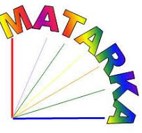Túzokok (Otis tarda) változó területhasználata egy új parlagisas-revírben (Aquila heliaca) a Mosoni-síkon
Absztrakt
A nyugat-pannon térségre kezdetektől jellemző intenzív szántóföldi gazdálkodás, a legeltető állattartás megszűnése, illetve az infrastrukturális kiépítettség mai napig tartó fokozódása (pl. szaporodó kavicsbányák és szélerőművek, autópályák, ipari és szórakoztató létesítmények) jelentős szerepet játszottak abban, hogy az 1990-es évekre a túzokok (Otis tarda) egyedszáma és élőhelyének nagysága egyaránt a korábbi töredékére csökkent (Faragó 2006). Egy kis, elszigetelt túzokpopuláció fennmaradása a Mosoni-síkon valószínűleg a határmenti viszonylagos nyugalomnak köszönhető.
Hivatkozások
Alonso, J. C., Martin, E., Alonso, J. A. & Morales, M. B. (1998): Proximate and ultimate causes of natal dispersal in the great bustard Otis tarda. – Behav. Ecol. 9: 243−252.
Alonso, J. C., Morales, M. B., & Alonso, J. A. (2000): Partial migration, and lek and nesting area fidelity in female Great Bustards. – The Condor 102: 127−136.
Bland, J. D., & Temple, S. A. (1990): Effects of predation-risk on habitat use by Himalayan Snowcocks. – Oecologia 82: 187−191.
Faragó, S., Giczi, F. & Wurm, H. (2001): Management for the Great Bustard (Otis tarda) in Western Hungary. – Game and Wildlife Science 18 (2): 171−181.
Faragó, S. (2006): One-hundred-year trend of the Great Bustard (Otis tarda) population in the Kisalföld Region. – Aquila 112: 153−162.
Faragó, S. & Kalmár, S. (2006): A túzok védelme Magyarországon LIFE-Nature project 2005. évi monitoring jelentése. – In: Faragó, S. (szerk.): Magyar Apróvad Közlemények Supplement, 2006. Nyugat-Magyarországi Egyetem, Vadgazdálkodási Intézet, Magyar Fogolykutató csoport, pp. 1−142.
Faragó, S. & Kalmár, S. (2007): A túzok védelme Magyarországon LIFE-Nature project 2006. évi monitoring jelentése. – In: Faragó, S. (szerk.): Magyar Apróvad Közlemények Supplement, 2007. Nyugat-Magyarországi Egyetem, Vadgazdálkodási és Gerinces Állattani Intézet, pp. 1−184.
Faragó, S. & Kalmár, S. (2008): A túzok védelme Magyarországon LIFE-Nature project 2007-2008. évi monitoring jelentése. – In: Faragó, S. (szerk.): Magyar Apróvad Közlemények Supplement, 2008. Nyugat-Magyarországi Egyetem, Vadgazdálkodási és Gerinces Állattani Intézet, pp. 1−282.
Horváth, M., Kovács, A. & Demeter, I. (2005): A parlagi sas biológiája a Kárpát-medencében. – In: Kovács, A., Demeter, I., Horváth, M., Fülöp, Gy., Frank, T. & Szilvácsku, Zs.: Parlagisas-védelmi kezelési javaslatok. Magyar Madártani és Természetvédelmi Egyesület (MME), Budapest, pp. 21−37.
Kollar, H. P. (2001): Aktionsplan Schutz für die Großtrappe in Österreich. – Studie des WWF Österreich im Auftrag des Bundesministeriums für Land- und Forstwirtschaft, Umwelt und Wasserwirtschaft. 98 pp.
Raab, R. (2006): Zur Situation der Großtrappe. – Weidwerk 3: 15−17.
Rodríguez, A., Andrén, H. & Jansson, G. (2001): Habitat-mediated predation risk and decision making of small birds at forest edges. – Oikos 95: 383−396.
Váczi, M. (2006): Parlagi sas fészkelése a Mosoni-síkon. – Heliaca 2006: 79−81.






